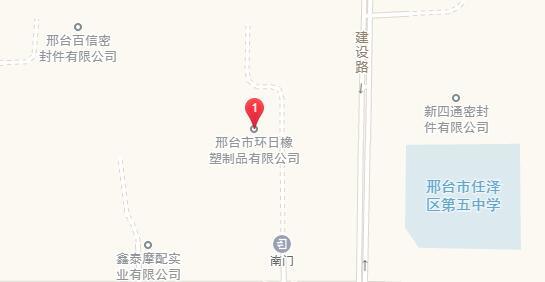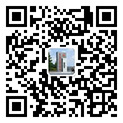NEWS INFORMATION
HUANRI RUBBER&PLASTIC
From Invalid Communication to Spiritual Resonance: Unlocking the Language Art of Workplace and Life
Release time:
2025-05-24 14:16
Source:
From Invalid Communication to Spiritual Resonance: Unlocking the Language Art of Workplace and Life
In daily work and life, we often fall into the dilemma of saying a lot, but the other party completely misunderstands the meaning; Couples argue endlessly over trivial matters; Collaboration among colleagues always leads to unnecessary friction; When friends gather, the topic always floats on the surface and cannot delve deeper.
Behind these phenomena, they all point to the same core issue - ineffective communication is consuming our most valuable interpersonal resources. Psychological research shows that about 80% of daily communication among ordinary people is inefficient or even ineffective, which not only wastes time but also invisibly builds a high wall of interpersonal communication. In this meeting, we will jointly analyze the crux of ineffective communication, explore the methodology of correct communication, unlock the deep password of language art, and make every communication a bridge connecting the soul.
1、 Six pitfalls of ineffective communication
Invalid communication is like a 'chronic poison' in interpersonal relationships, silently damaging our social ecology.
01
Six pitfalls of ineffective communication
Through analyzing thousands of workplace and family communication cases, we have found that ineffective communication often falls into the following six traps: first, "self talk communication" - only focusing on expressing one's own views and completely ignoring feedback from the other party;
The second is "emotional hostage communication" - communicating with strong negative emotions, completely masking the content with emotions;
The third is "ambiguous communication" - using a large number of words that may cause ambiguity, such as "as soon as possible" and "appropriately";
The fourth is "value judgment communication" - frequently using judgmental language such as "you should" and "you shouldn't" in communication;
The fifth is "dispersed communication" - pseudo communication where one swipes their phone while responding perfunctorily;
The sixth is "over interpretation communication" - unnecessary and complex interpretation of simple information.
2、 The four-dimensional model of correct communication
To break the deadlock of ineffective communication, it is necessary to establish a scientific and systematic communication methodology. We propose the 'Four Dimensional Model of Effective Communication' to help everyone achieve efficient communication in both the workplace and daily life
The first dimension: deep listening. True communication begins with listening, not speaking. The Japanese business guru Kazuo Inamori once said, "When listening, we should be fully focused like a desert absorbing water." This requires us to put down our phones, maintain eye contact, express concern through body language, and confirm understanding through retelling at appropriate times. The "active listening" technique proposed by psychologist Carl Rogers emphasizes understanding the other person's feelings without judgment, which is an effective method to improve the quality of listening.
Second dimension: precise expression. German philosopher Wittgenstein once said, "The boundary of language is the boundary of thought." To enhance expressive ability, one must first clarify their thoughts and follow the "pyramid principle" - the conclusion before the reason. In workplace reporting, the "PREP rule" (viewpoint reason case reiterating viewpoint) can be used, while in emotional communication, the "I information" expression method (describing facts expressing feelings explaining needs) should be used more, avoiding accusatory language.
The third dimension: Empathy resonance. Neuroscience research has found that when two people truly understand each other, their brain activity exhibits a "coupling" phenomenon. Cultivating empathy requires stepping out of self centeredness and trying to think from the other person's perspective. You can use the technique of "emotional annotation", such as "it sounds like you are very disappointed about this matter", which can make the other person feel understood. Starbucks' '' Emotional Connection 'training proves that empathetic communication can significantly improve team collaboration efficiency.
The fourth dimension: flexible adjustment. Communication guru Dale Carnegie pointed out, "The secret to getting along with others is to adapt to their psychological needs." Communication styles should be adjusted according to the characteristics of the target audience: visual people should use more charts to illustrate, auditory people should pay attention to pronunciation and intonation, and numerical people should be provided with specific data. At the same time, it is important to pay attention to cultural differences and avoid using slang and metaphors that may cause misunderstandings in cross-cultural communication.
3、 The Three Sublimations of Language Art
Beyond basic communication skills, we also need to pursue higher-level language art expression, elevating communication from a functional level to an aesthetic level:
Firstly, the power of metaphor. In family communication, using stories and metaphors instead of preaching often yields unexpected results.
Next is the control of rhythm. In daily communication, we need to learn to control our speech speed, pause appropriately at key points, and convey emotions through the importance and urgency of our voice.
Finally, there is the wisdom of silence. Timely silent companionship is often the best support when the other person is emotionally agitated. The wisdom of ancient Chinese saying 'the friendship between gentlemen is as light as water' reminds us to maintain appropriate language distance in intimate relationships.
Every communication is a process of sowing seeds, and the kind of language art we use will harvest the kind of interpersonal relationships. Let's start from today and see every conversation as an opportunity to create beauty, making language a rainbow that connects the soul, rather than a high wall that isolates emotions.
Media Promotion Department
May 15, 2025
People with high emotional value can make them feel comfortable and happy, reduce mental energy consumption, and even subtly improve their physical and mental health. In fact, this ability is equally valuable in the workplace - people with high emotional value can not only enhance team happiness, but also become an "invisible engine" for efficient collaboration.
View More



